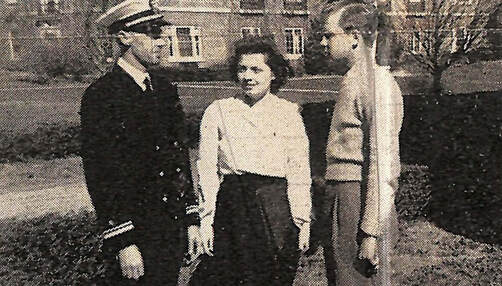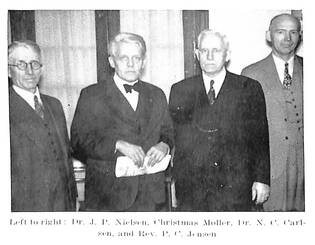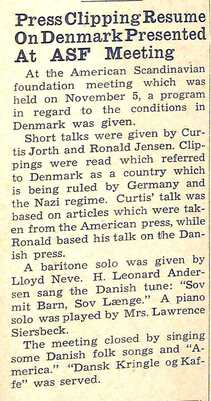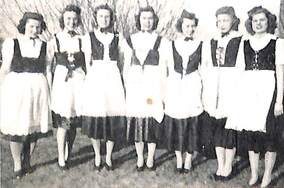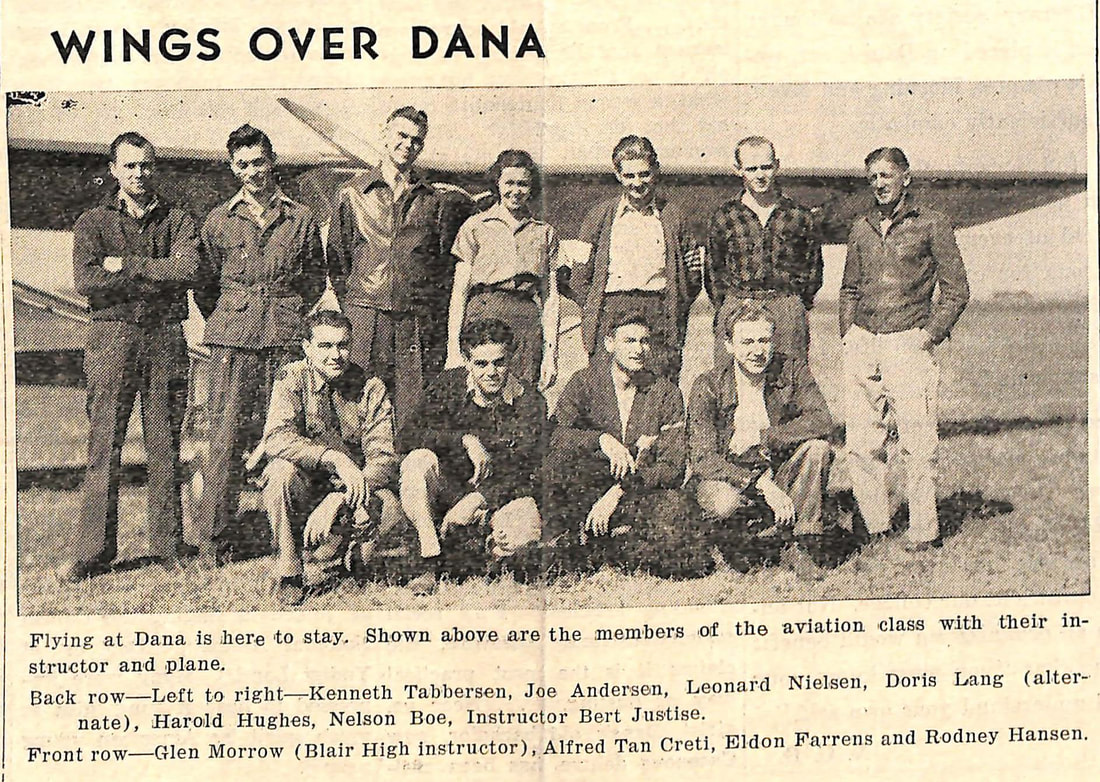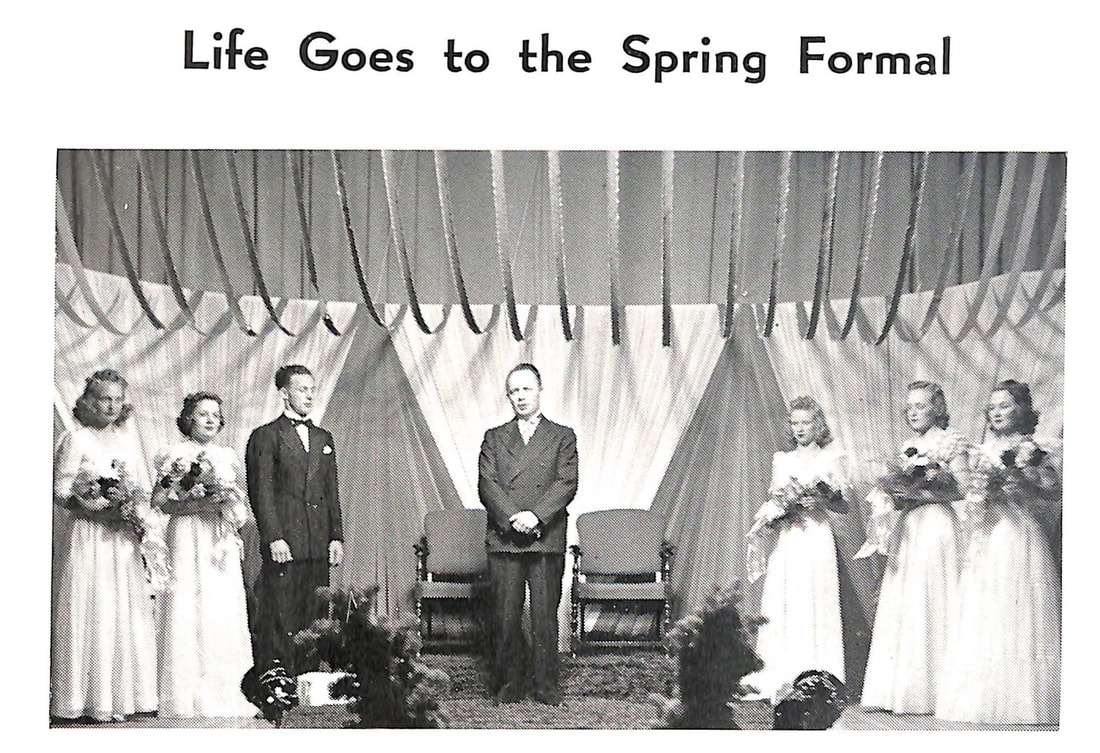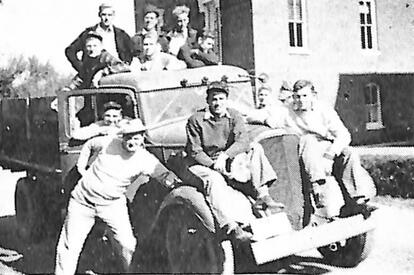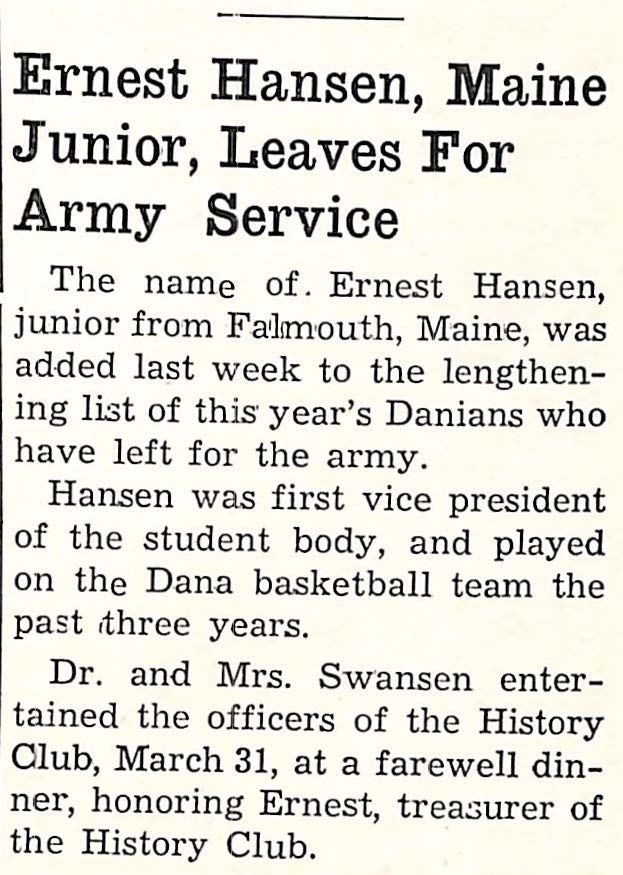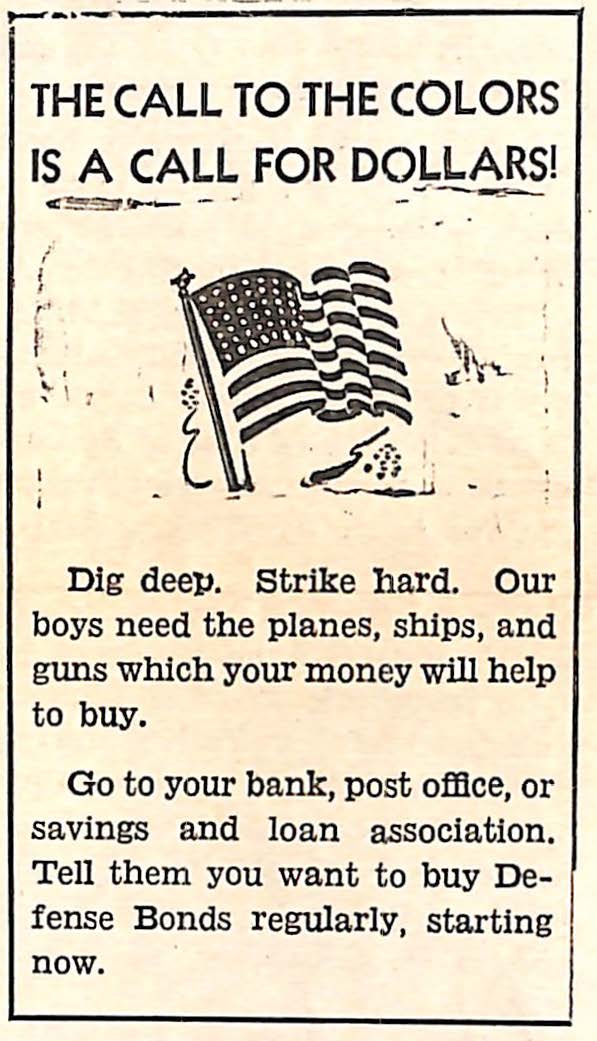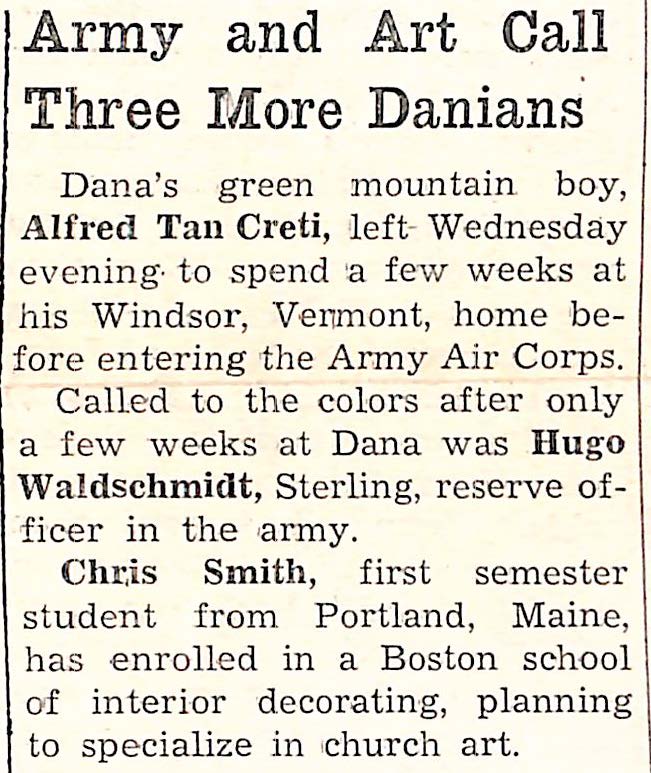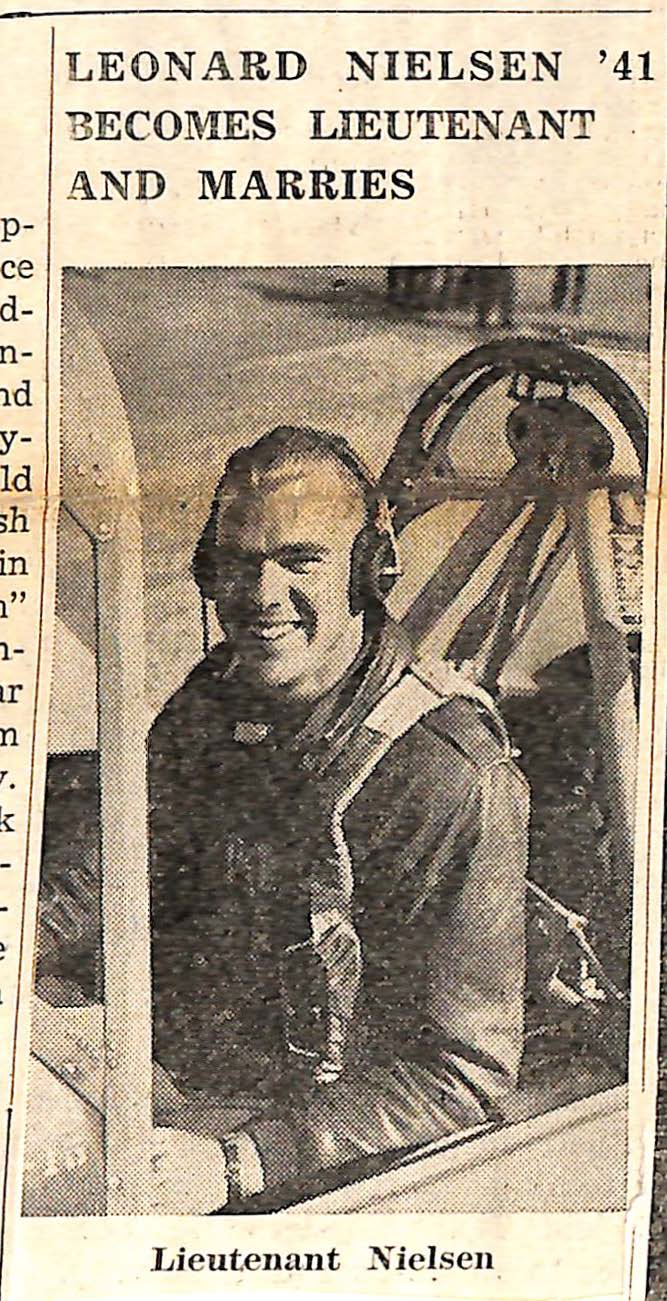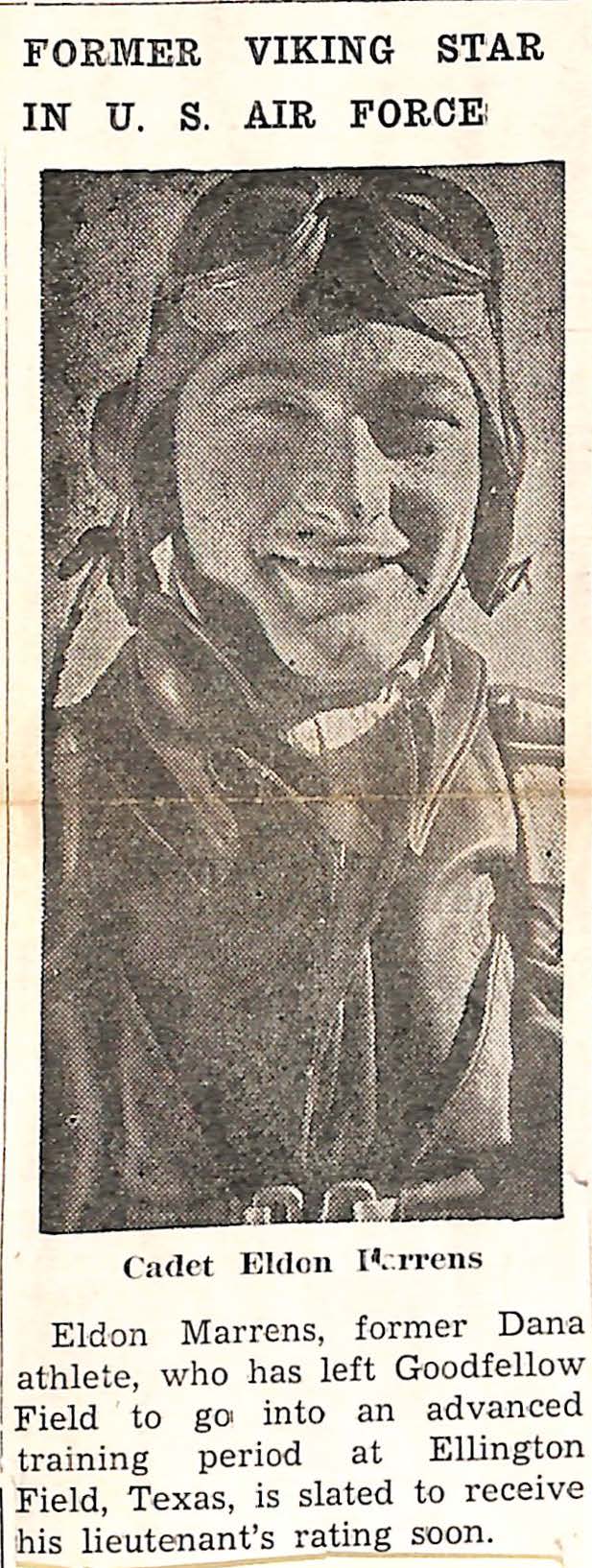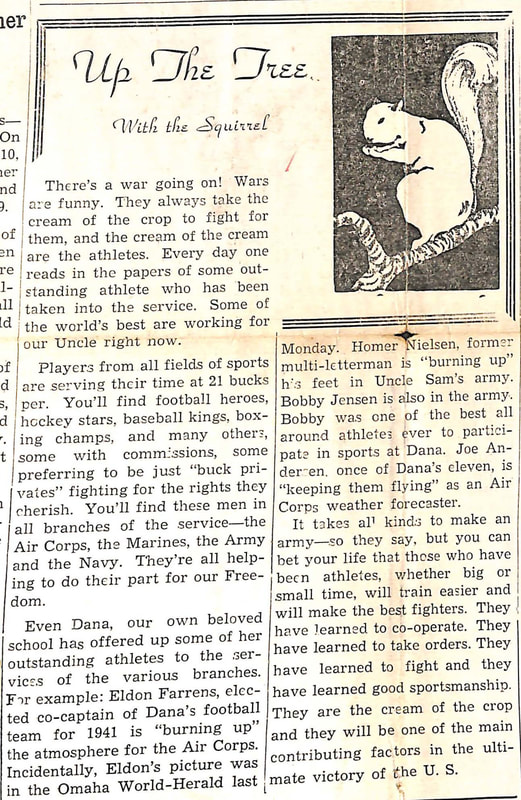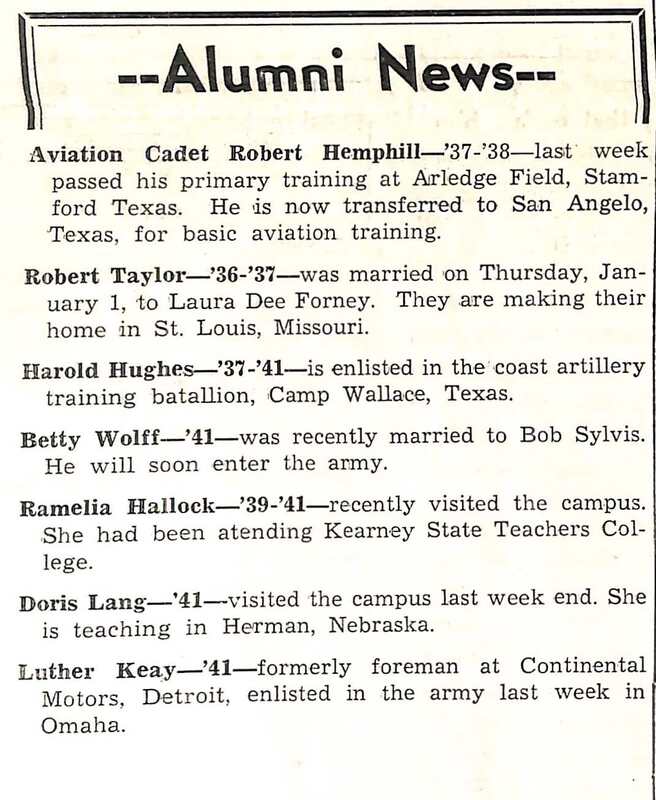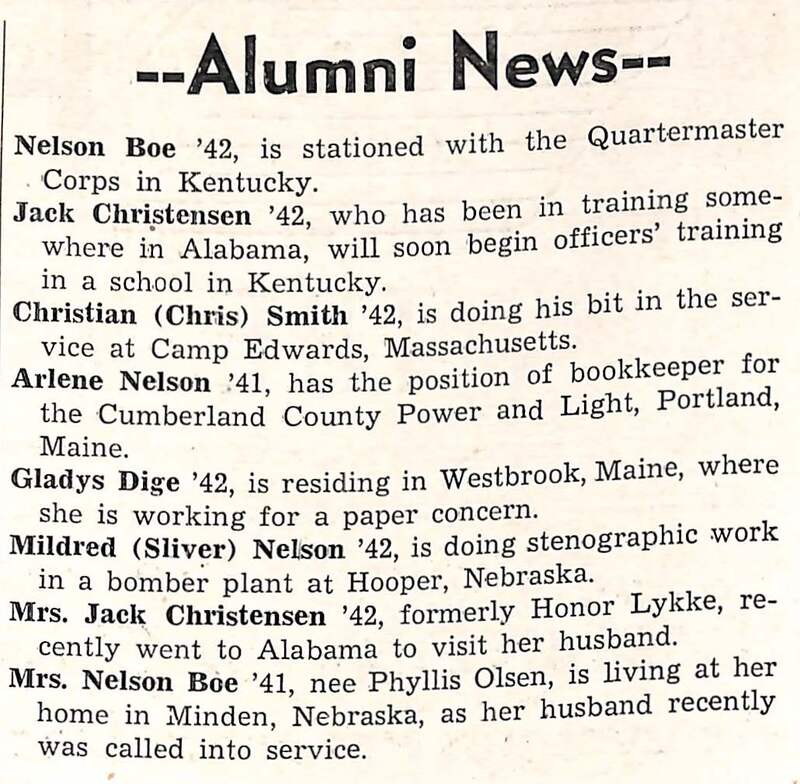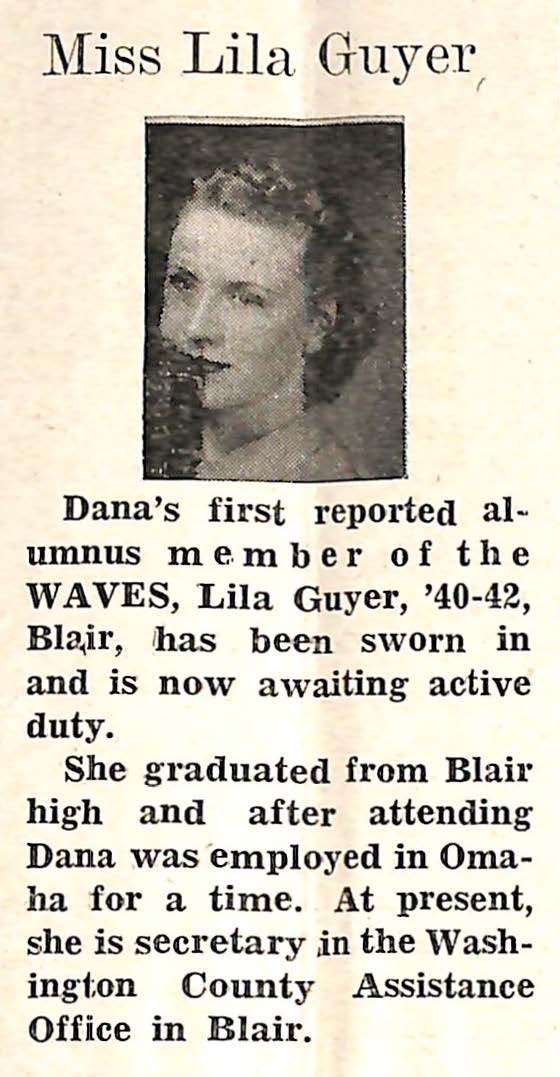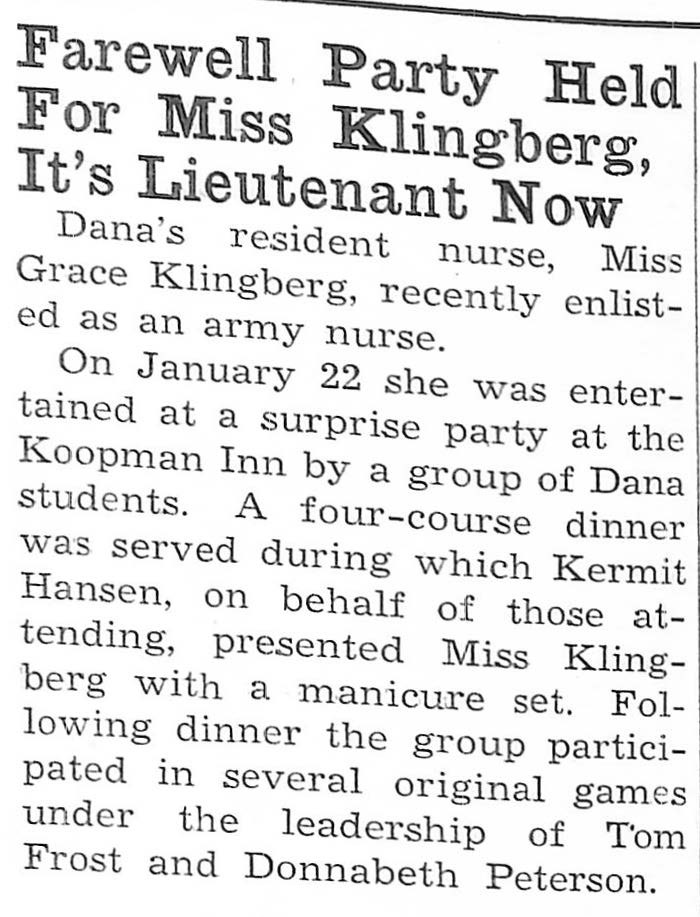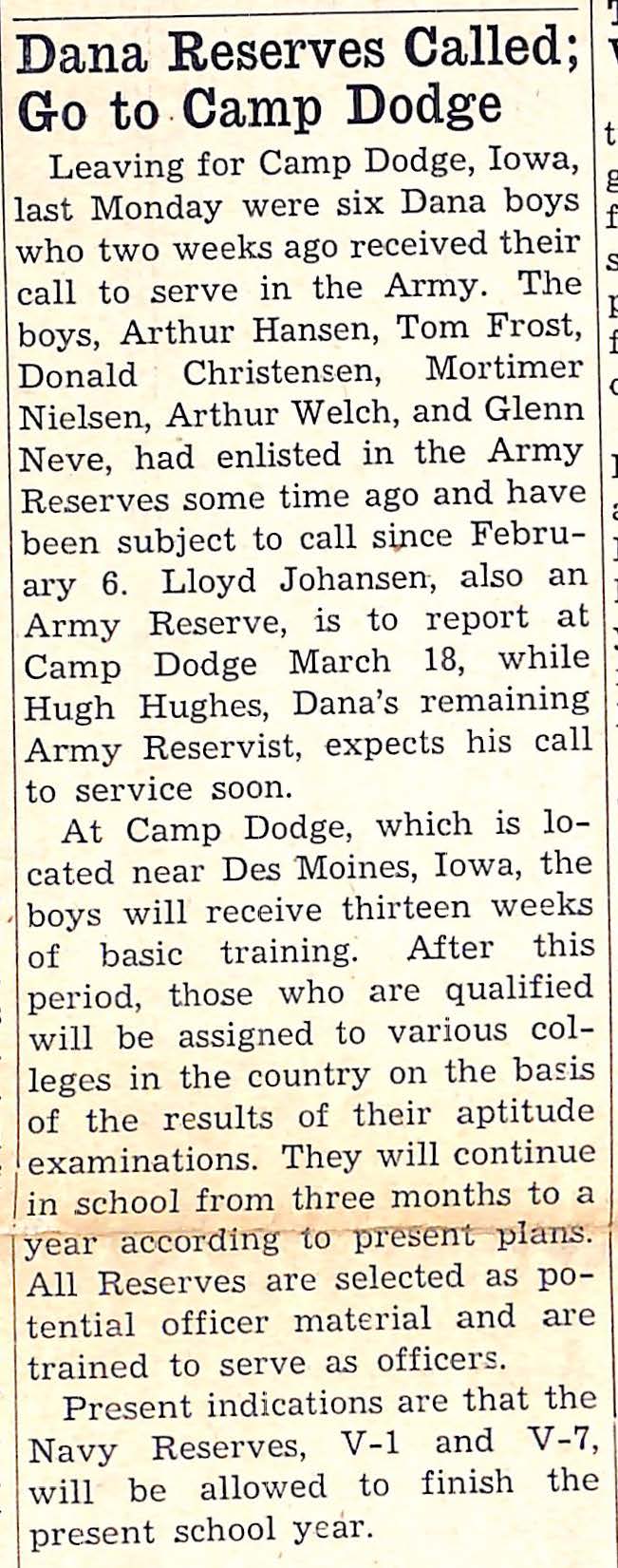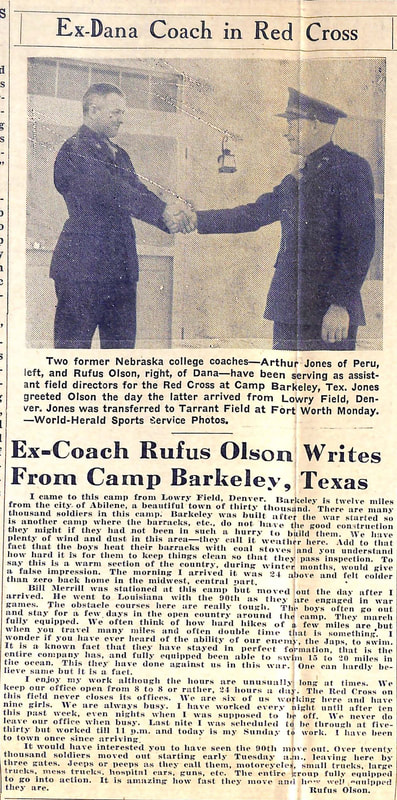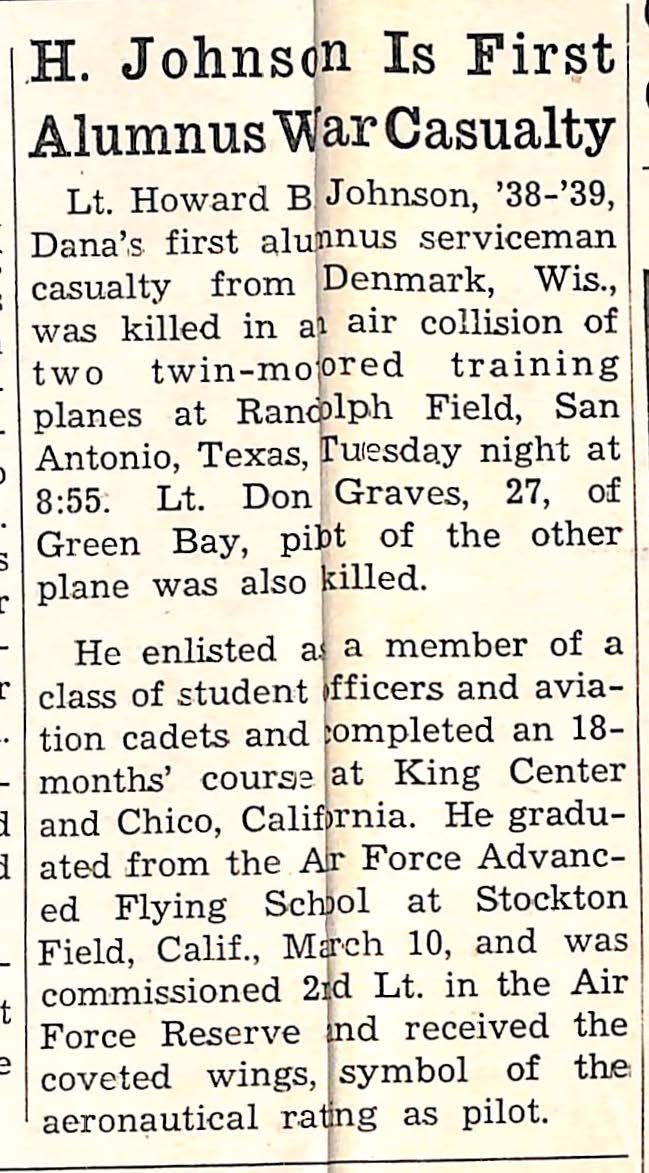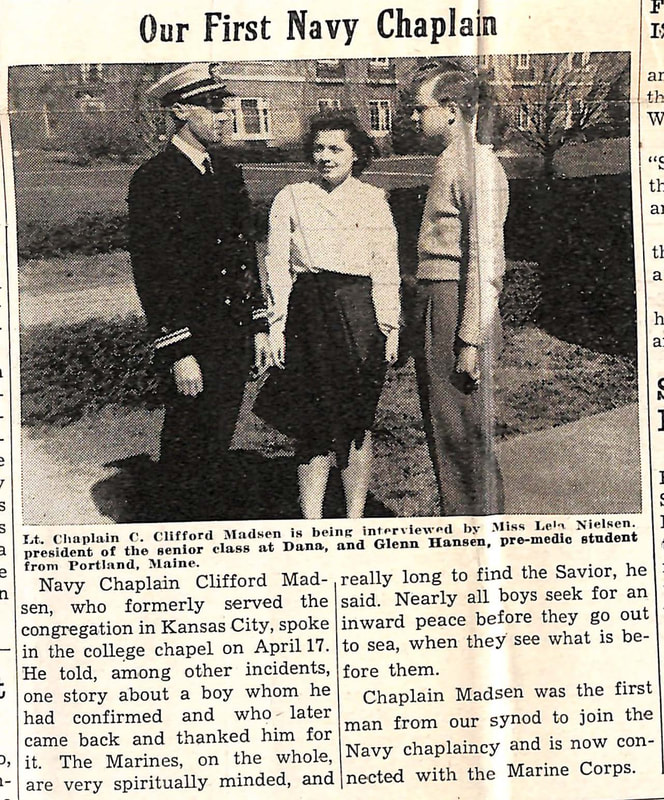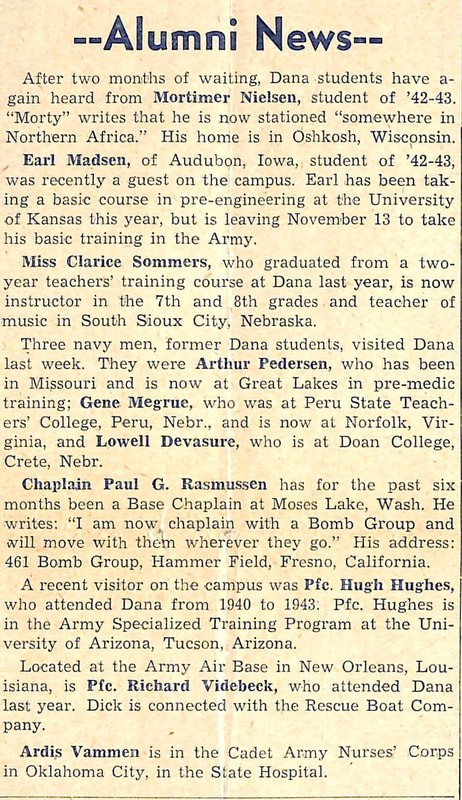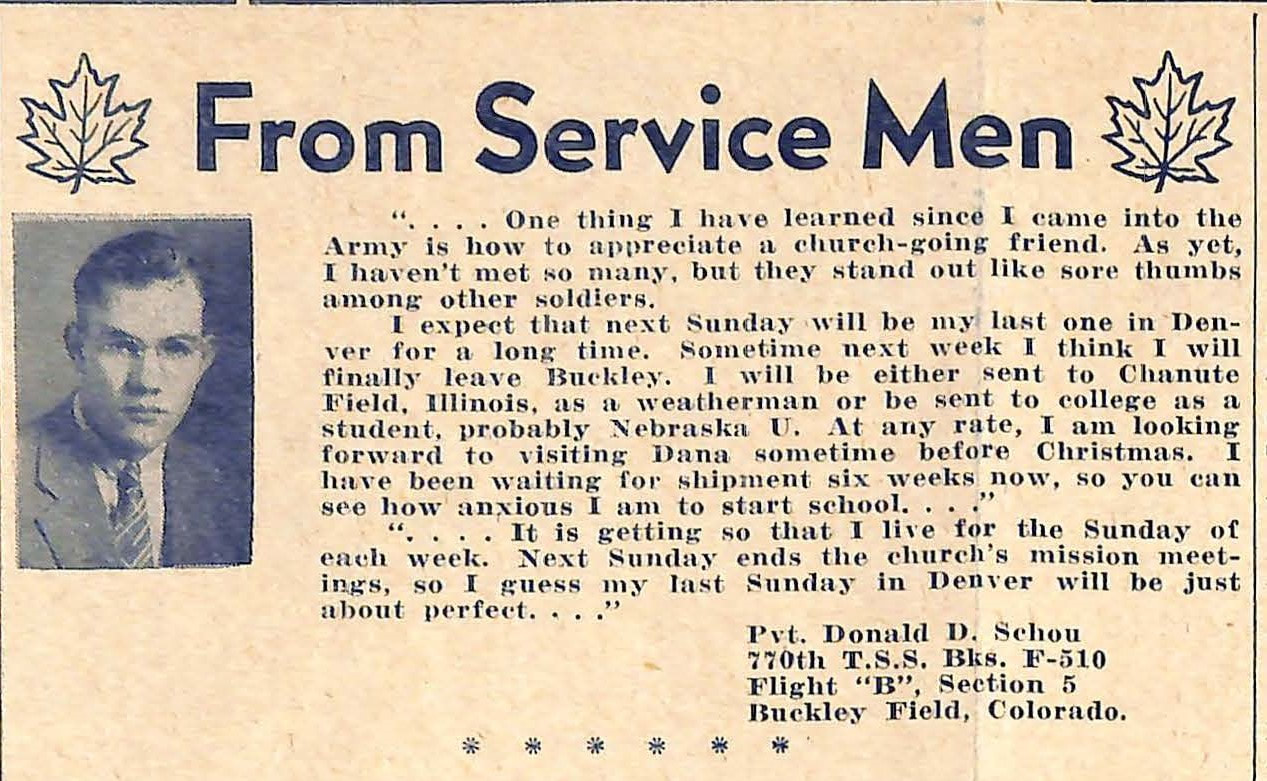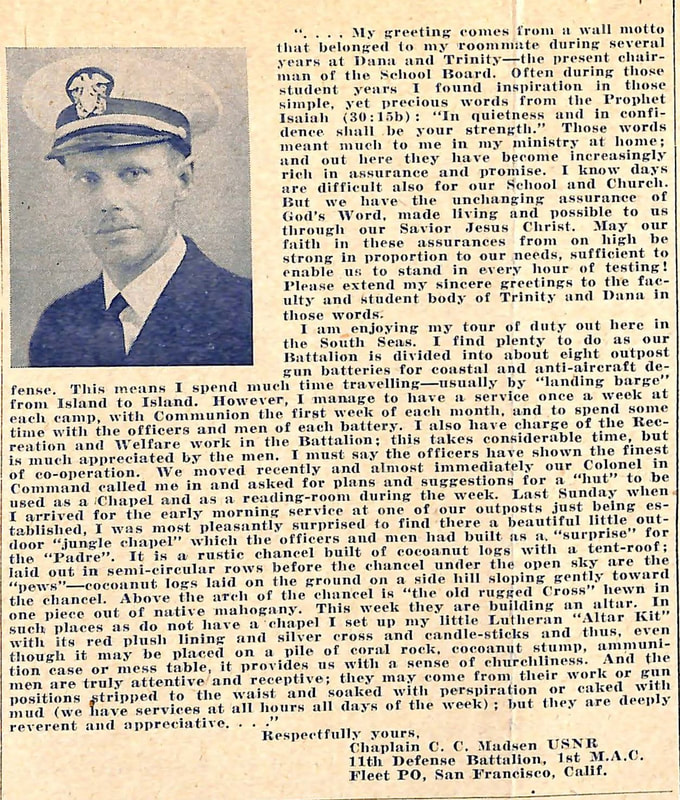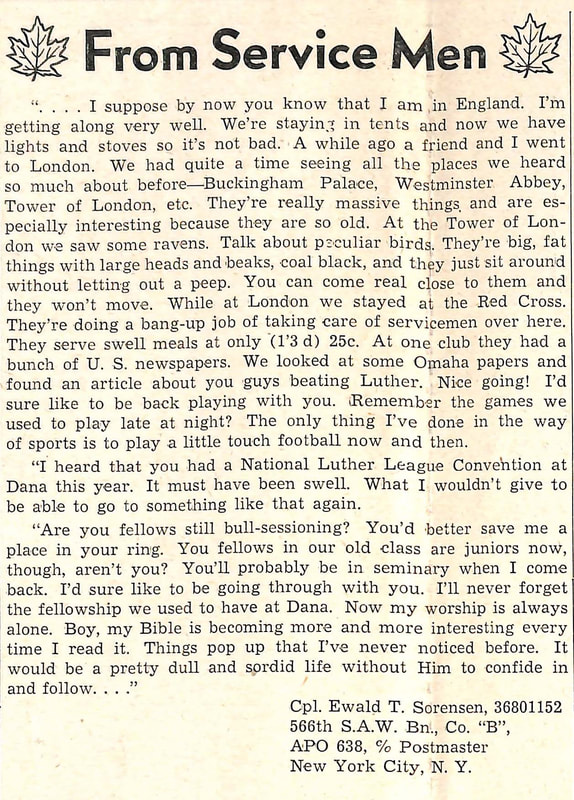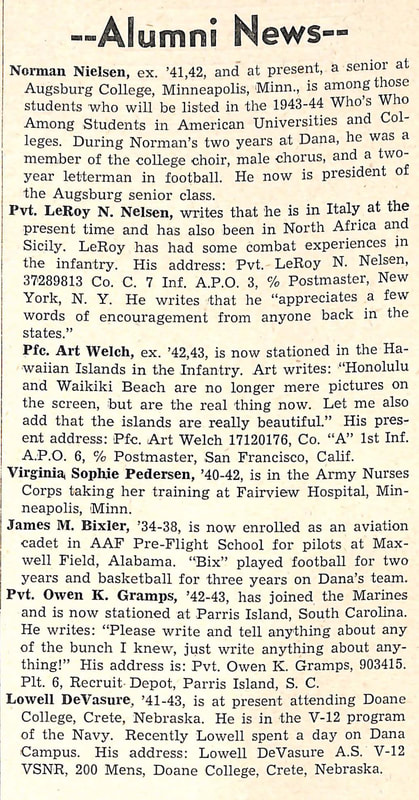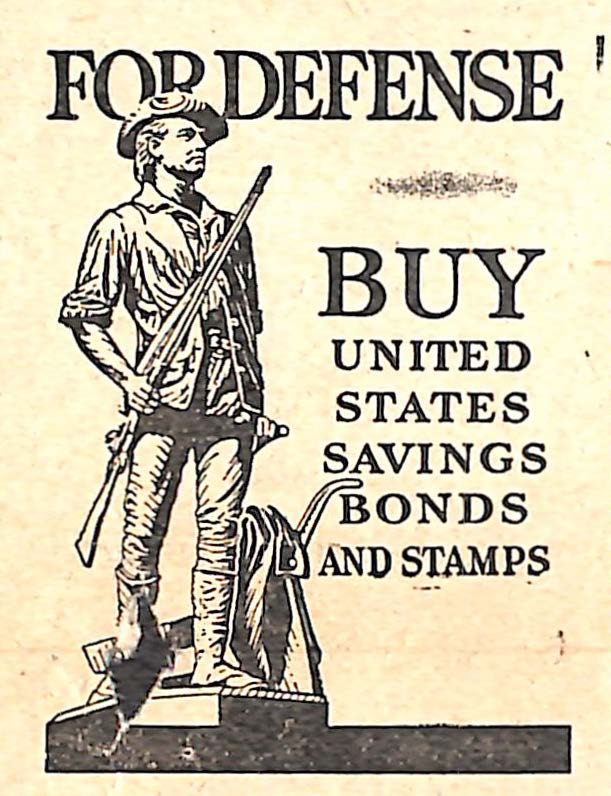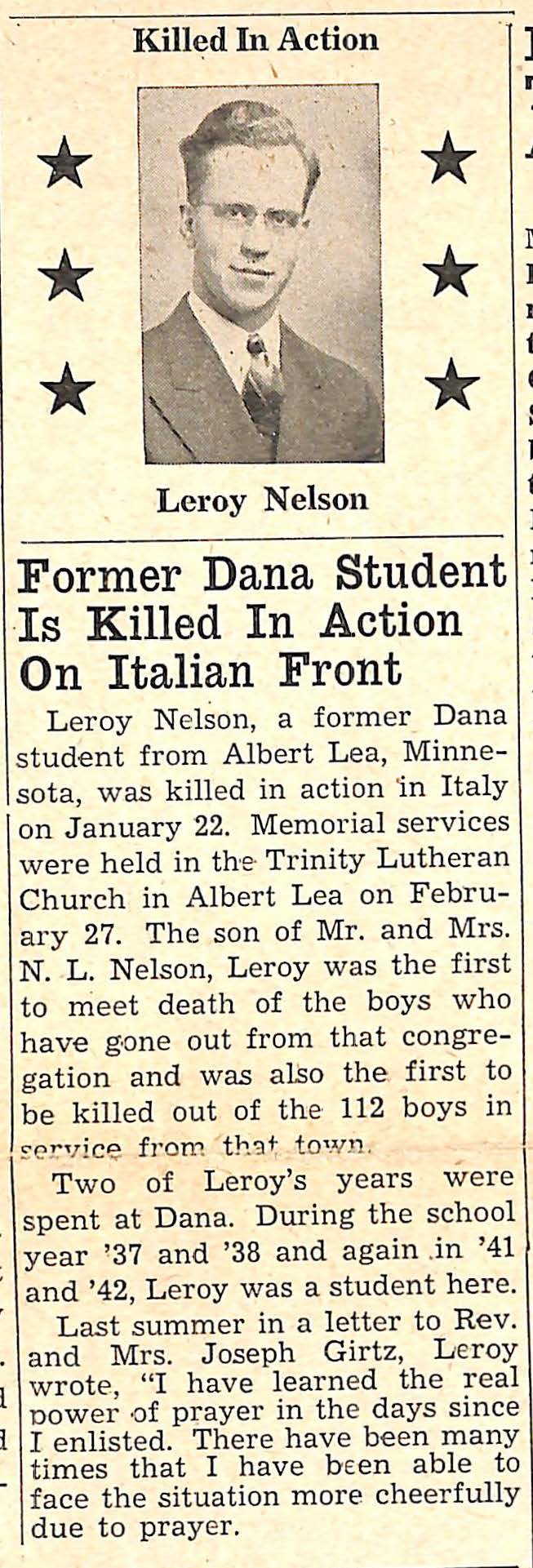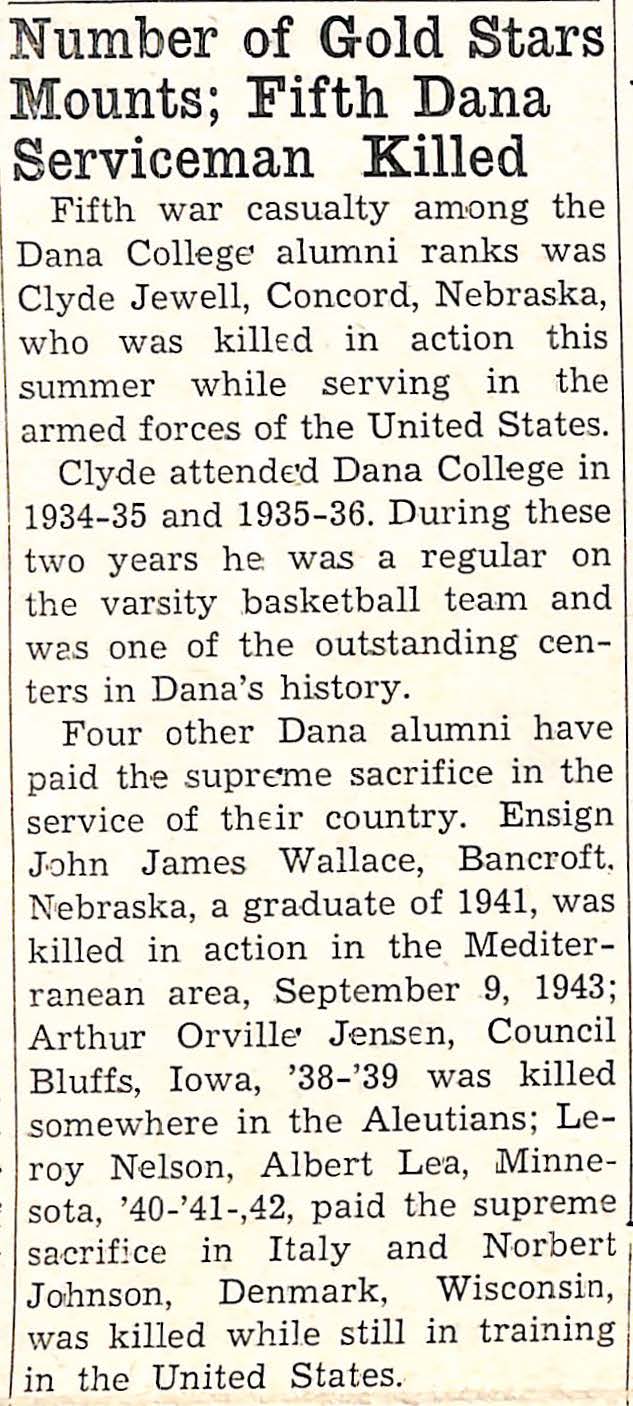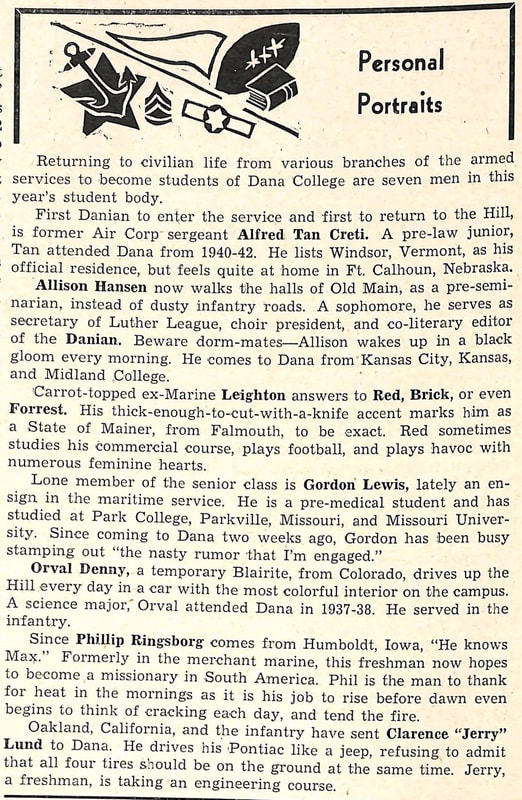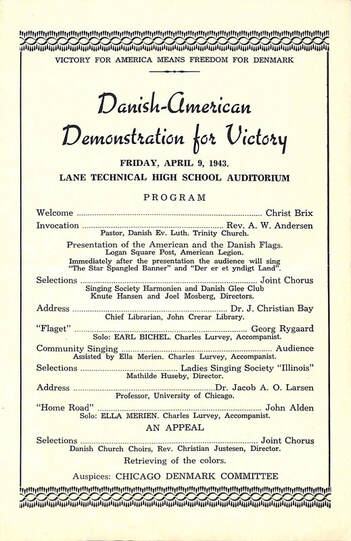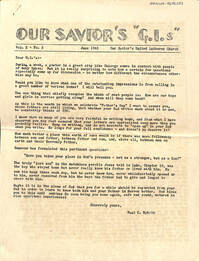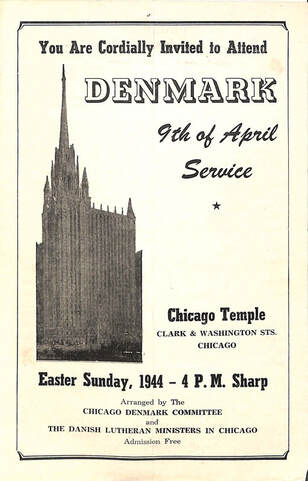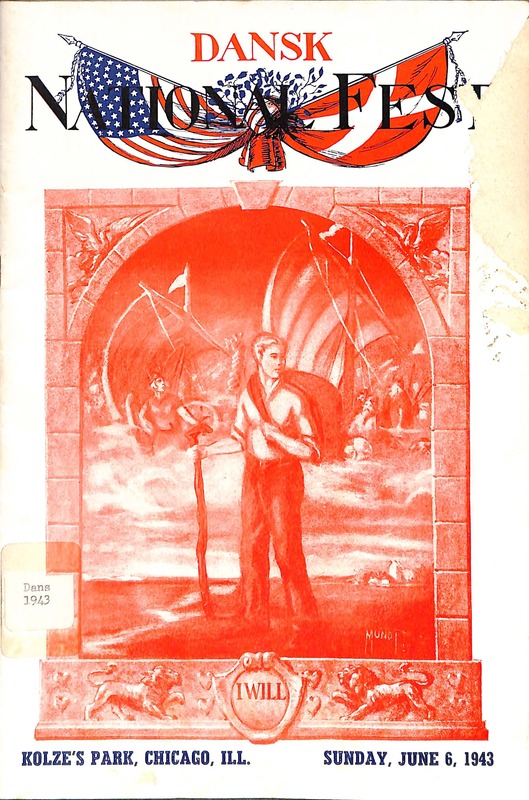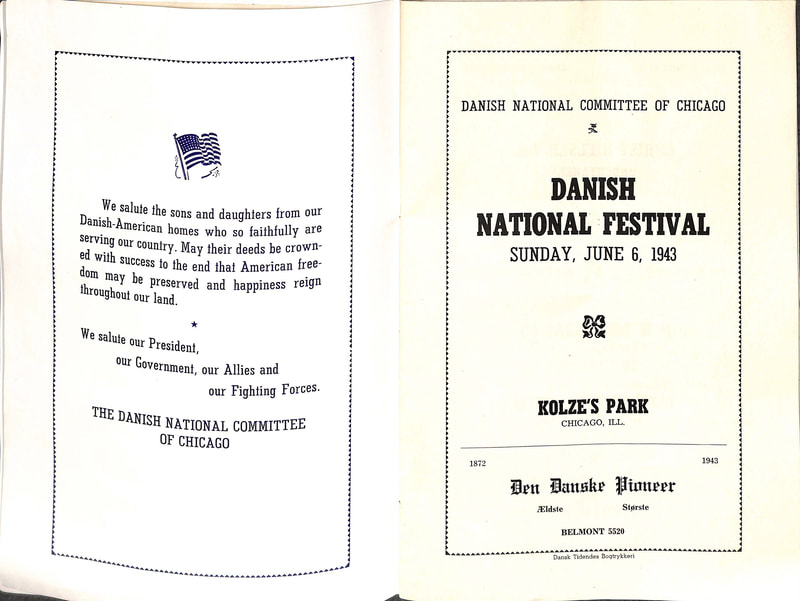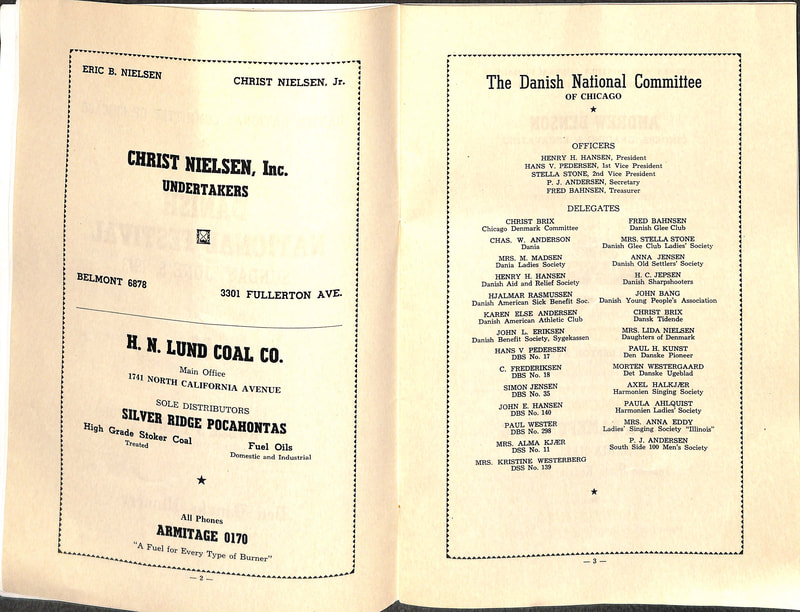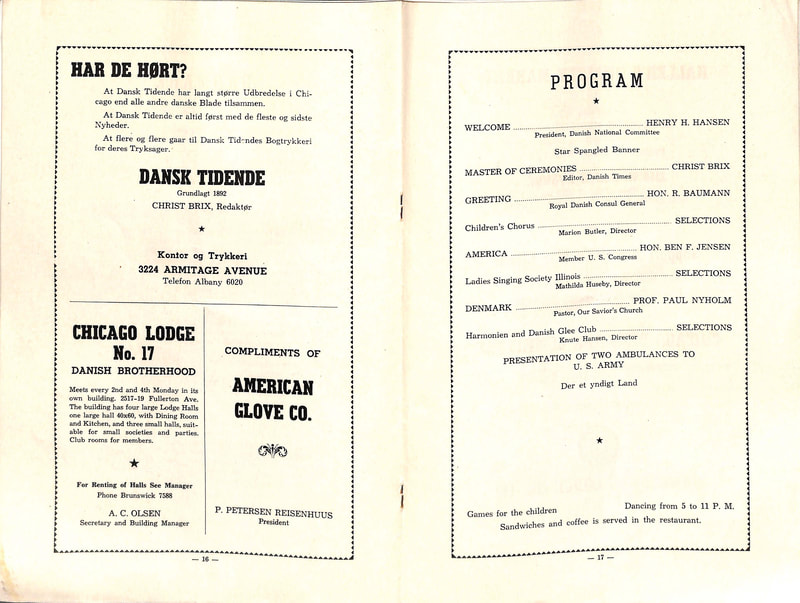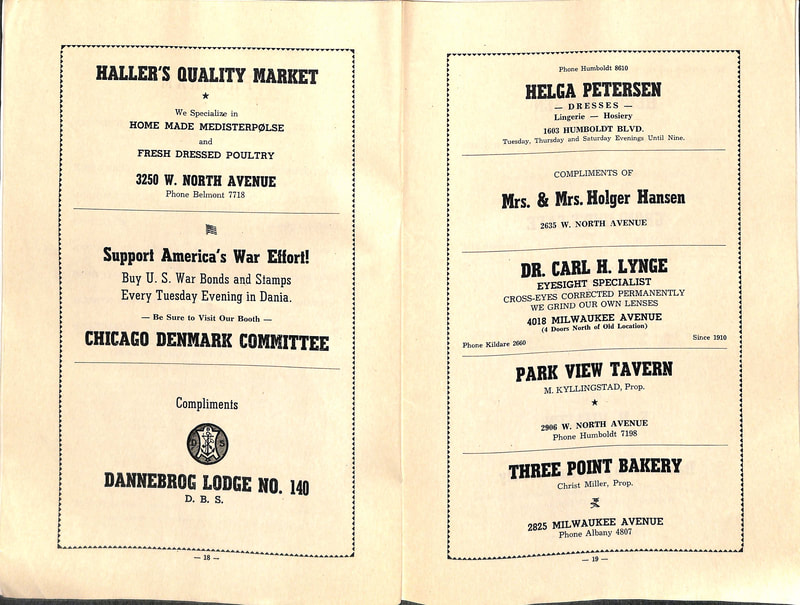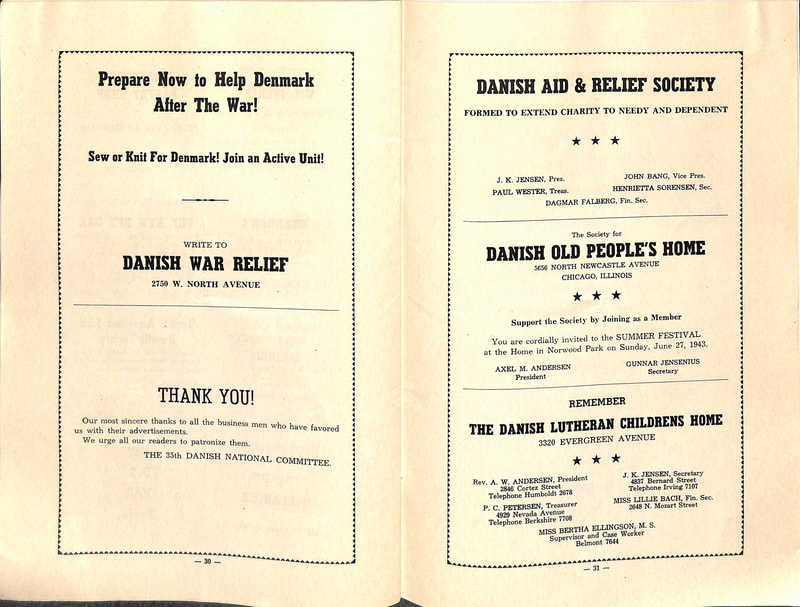Dana college during WWII
|
Dana College's The Word tour took place against the backdrop of WWII,
Dana's historical connection to Denmark, and Danish Americans' reactions to the occupation of Denmark. |
Dana's Danish connection
|
Denmark was invaded by Nazi Germany on April 9, 1940, in the early morning hours. Dana College's correspondent reported to the Danish-language newspaper Den Danske Pioneer:
As one of the centers for Danish American education, during WWII, Dana College was visited by some of the leaders in the worldwide movement for the liberation of Denmark. In 1942, two prominent Danes spoke at Dana: Henrik Kauffmann, the independent Danish envoy to the United States, and Christmas Møller, the exiled Danish politician who headed the Free Denmark movement in the United Kingdom. In 1941, Professor Paul Nyholm was part of founding the Dana Chapter of the American-Scandinavian Foundation (ASF). This club was instrumental in organizing events related to occupied Denmark, such as showing documentary films about the invasion of Denmark and other European countries as well as lectures and discussions about developments in Denmark and the other Nordic countries. Following the assassination of Kaj Munk in January 1944, ASF honored him with a memorial banquet attended by both students and people from nearby towns. The Dana students' The Word performance was also perceived as an initiative highlighting the plight of occupied Denmark. The performance was noted in England in Frit Danmark, a publication supporting the Danish resistance movement and the fight for Denmark's freedom. Some issues of Frit Danmark reached occupied Denmark. A writer in Den Danske Pioneer expressed the hope that it would raise the Danes' spirit to read that people in America were interested in Denmark's foremost poet. The teachers, students and local Danish Americans living in the Blair area were concerned about the occupation of Denmark. However, the United States' entry into the war affected them much more directly. |
In April 1939, a year before the German invasion of Denmark, Denmark's Crown Prince Frederik IX and Crown Princess Ingrid visited Dana College as part of their tour of the United States.
|
Student life at dana in the early 1940s
Ed Hansen was a member of the The Word theater troupe. His scrapbook photos from his years at Dana College and Trinity Seminary in the early 1940s show the daily life of a student with friends, outings, parties, family visits, dorm life, choir, sports and studying.
An american collegeThe United States' entry into World War II brought several significant changes to Dana College:
|
|
Dana's student newspaper reports
Articles and notes from the student newspaper Hermes show the progress of the war from the first students leaving the college to students returning to resume their studies after the war. Publishing their letters and mailing addresses, Hermes encouraged readers to correspond with student and alumni service members. Hermes also contained ads encouraging readers to support the war effort by buying war bonds and war stamps. The newspaper also reported on missing, captured and killed alumni.
Danish Americans during WWIIWhen Denmark was invaded by Nazi-Germany in 1940, there were almost half a million Danish-born and second-generation Danish Americans living in the United States. Shortly after the invasion, Danish Americans created the National America Denmark Association (NADA), and many Danish American organizations, congregations and individuals joined to support the liberation of Denmark. Dana College also became a member of NADA.
Throughout the war years, NADA and other Danish American organizations were active in supporting Danish merchant marines sailing for the allied countries and Danish members of the allied armed forces. Members also sewed, knitted and gathered clothes to be shipped to Denmark after the war. They raised money for Danish refugees and illegal shipping routes between occupied Denmark and neutral Sweden. The Danish envoy Henrik Kauffmann led the way by declaring himself independent from his occupied home country's government and signing a treaty that allowed the United States to utilize the then Danish colony of Greenland for military purposes. Danish Americans were also active in public relations, trying to present the Danish people in the best possible light to ensure Denmark's renewed independence after the war. After the attack on Pearl Harbor, the Danish American organizations saw themselves as having a dual purpose: to support Denmark and support the United States. Danish Americans served in the U.S. armed forces, bought war bonds, and worked in the nation's war production, which was led by men such as the Danish-born automotive industry executive General William S. Knudsen. Many Danish American families had sons and daughters serving in the armed forces. Some of these young people did not return. Dana College belonged to the United Evangelic Lutheran Church which consisted of 192 congregations and less than 20,000 adult members. Of these, 195 members died serving their country. Read more about Danish Americans during WWII. |
Keeping in touch with the G.I.sOur Savior's "G.I.s" was a popular publication created for the men and women of Our Savior's United Lutheran Church in Chicago who were away from home in the armed forces. The content was created from correspondence with the congregation's G.I.s and provides snapshots of life in the military during WWII. In this June 1945 issue, one soldier in Germany is hoping to go visit Denmark, one is looking forward to finally meeting his son and one refers to himself as a true-blooded Dane needing his coffee. Also, a reporter visited a wedding anniversary celebration at Nyholm's house to write about the Danish-Americans' reactions to news of the liberation of Denmark.
You can view a copy of Our Savior's "G.I.s" by clicking on the link below. Make sure to click the 'back arrow" afterwards to remain on this website.
| ||
Danish 1943 festival program
The program from the Danish festival in 1943 in Chicago reflects some of the ways the war impacted the Danish American community and how Danish Americans responded by supporting both Denmark and the United States. There's a note saluting the sons and daughters of Danish American homes serving their country, a program for a ceremony which contains a mix of Danish and American patriotic content, an ad for buying war bonds and war stamps, and an ad to help Denmark by sewing or knitting clothes. As part of the festival, Danish Americans donated two ambulances to the U.S. Army. Below is a selection of pages from the program.
